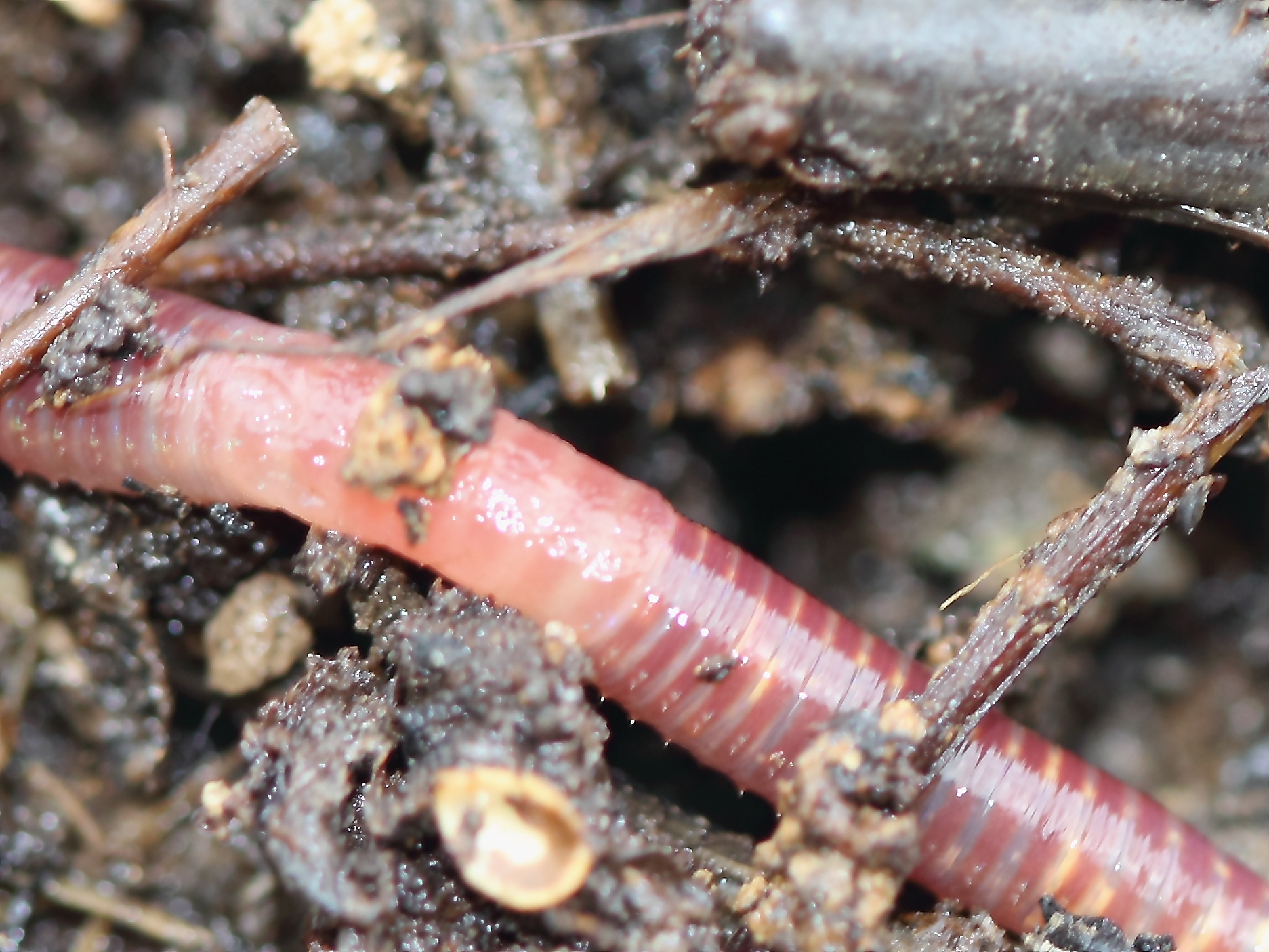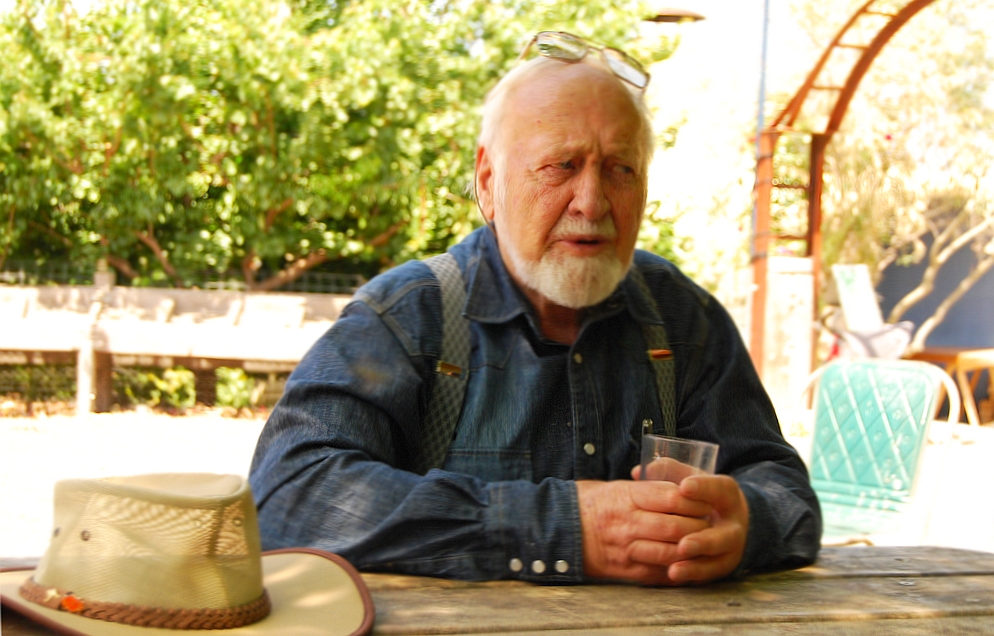|
Vermicompost
Vermicompost (vermi-compost) is the product of the decomposition process using various species of worms, usually red wigglers, white worms, and other earthworms, to create a mixture of decomposing vegetable or food waste, bedding materials, and vermicast. This process is called vermicomposting, while the rearing of worms for this purpose is called vermiculture. Vermicast (also called worm castings, worm humus, worm manure, or worm faeces) is the end-product of the breakdown of organic matter by earthworms. These excreta have been shown to contain reduced levels of contaminants and a higher saturation of nutrients than the organic materials before vermicomposting. Vermicompost contains water-soluble nutrients and is an excellent, nutrient-rich organic fertilizer and soil conditioner.Coyne, Kelly and Erik Knutzen. ''The Urban Homestead: Your Guide to Self-Sufficient Living in the Heart of the City.'' Port Townsend: Process Self Reliance Series, 2008. It is used in gardening and su ... [...More Info...] [...Related Items...] OR: [Wikipedia] [Google] [Baidu] |
Vermifilter
A vermifilter (also vermi-digester or lumbrifilter) is an aerobic treatment system, consisting of a biological reactor containing media that filters organic material from wastewater. The media also provides a habitat for aerobic bacteria and composting earthworms that purify the wastewater by removing pathogens and oxygen demand. The "trickling action" of the wastewater through the media dissolves oxygen into the wastewater, ensuring the treatment environment is aerobic for rapid decomposition of organic substances. Vermifilters are most commonly used for sewage treatment and for agro-industrial wastewater treatment. Vermifilters can be used for primary, secondary and tertiary treatment of sewage, including blackwater and greywater in on-site systems and municipal wastewater in large centralised systems. Vermifilters are used where wastewater requires treatment before being safely discharged into the environment. Treated effluent is disposed of to either surface or subsur ... [...More Info...] [...Related Items...] OR: [Wikipedia] [Google] [Baidu] |
Eisenia Fetida
''Eisenia fetida'', known under various common names such as manure worm, redworm, brandling worm, panfish worm, trout worm, tiger worm, red wiggler worm, etc., is a species of earthworm adapted to decaying organic material. These worms thrive in rotting vegetation, compost, and manure. They are epigean, rarely found in soil. In this trait, they resemble '' Lumbricus rubellus''. Red wigglers are reddish-brown in color, have small rings around their body and have a yellowish tail. They have groups of bristles (called setae) on each segment that move in and out to grip nearby surfaces as the worms stretch and contract their muscles to push themselves forward or backward. ''Eisenia fetida'' worms are native to Europe, but have been introduced (both intentionally and unintentionally) to every other continent except Antarctica. ''Eisenia fetida'' also possess a unique natural defense system in their coelomic fluid: cells called coelomocytes secrete a protein called lysenin, wh ... [...More Info...] [...Related Items...] OR: [Wikipedia] [Google] [Baidu] |
Eisenia Foetida
''Eisenia fetida'', known under various common names such as manure worm, redworm, brandling worm, panfish worm, trout worm, tiger worm, red wiggler worm, etc., is a species of earthworm adapted to decaying organic material. These worms thrive in rotting vegetation, compost, and manure. They are epigean, rarely found in soil. In this trait, they resemble ''Lumbricus rubellus''. Red wigglers are reddish-brown in color, have small rings around their body and have a yellowish tail. They have groups of bristles (called setae) on each segment that move in and out to grip nearby surfaces as the worms stretch and contract their muscles to push themselves forward or backward. ''Eisenia fetida'' worms are native to Europe, but have been introduced (both intentionally and unintentionally) to every other continent except Antarctica. ''Eisenia fetida'' also possess a unique natural defense system in their coelomic fluid: cells called coelomocytes secrete a protein called lysenin, whic ... [...More Info...] [...Related Items...] OR: [Wikipedia] [Google] [Baidu] |
Permaculture
Permaculture is an approach to land management and settlement design that adopts arrangements observed in flourishing natural ecosystems. It includes a set of design principles derived using whole-systems thinking. It applies these principles in fields such as regenerative agriculture, town planning, rewilding, and community resilience. Permaculture originally came from "permanent agriculture", but was later adjusted to mean "permanent culture", incorporating social aspects. The term was coined in 1978 by Bill Mollison and David Holmgren, who formulated the concept in opposition to modern industrialized methods instead adopting a more traditional or "natural" approach to agriculture. Permaculture has many branches including ecological design, ecological engineering, regenerative design, environmental design, and construction. It also includes integrated water resources management, sustainable architecture, and regenerative and self-maintained habitat and agricultu ... [...More Info...] [...Related Items...] OR: [Wikipedia] [Google] [Baidu] |
Eudrilus Eugeniae
''Eudrilus eugeniae'', also called the "African Nightcrawler", is an earthworm species native to tropical west Africa and now widespread in warm regions under vermicompost; it is an excellent source of protein and has great pharmaceutical potential. Growth Fecundity, growth, maturation and biomass production were all significantly greater at 25 °C than 15°, 20°or 30°. The growth of individual earthworms increases as the population density lowers, but the greatest overall earthworm biomass production occurs at the highest population density. The greatest number of cocoons per week and the number of hatchlings per cocoon are obtained at 25 °C. Cocoons of ''E. eugeniae'' hatched in only 12 days at 25 °C, and the worms reach sexual maturity in as little as 35 days after hatching. Etymology Named after Johan Gustaf Hjalmar Kinberg's Swedish survey ship, the ‘Eugenie’. Life cycle Throughout its life cycle, ''E. eugeniae'' grows much more rapidly than ' ... [...More Info...] [...Related Items...] OR: [Wikipedia] [Google] [Baidu] |
Eisenia Hortensis
The European nightcrawler (''Dendrobaena hortensis'') is a medium-small earthworm averaging about 1.5 g when fully grown. Generally blueish, pink-grey in color with a banded or striped appearance, the tips of their tails are often cream or pale yellow. When the species has not been feeding, it is pale pink. The species is usually found in deep woodland litter and garden soils that are rich in organic matter in European countries. ''D. hortensis'' is sold primarily as a bait worm, but its popularity as a composting worm is increasing. It was considered part of '' Eisenia'' until 2003. It is also formerly considered part of the similar ''Dendrobaena veneta'', but now just part of the species complex. Both are useful compost worms. The two species are probably not distinguished in vermicomposting. In general, the ''E. hortensis'' name is more common in North America while the ''D. veneta'' name is more common in Europe. Etymology The former genus ''Eisenia'' is named after Swedish ... [...More Info...] [...Related Items...] OR: [Wikipedia] [Google] [Baidu] |
Worm
Worms are many different distantly related bilateral animals that typically have a long cylindrical tube-like body, no limbs, and no eyes (though not always). Worms vary in size from microscopic to over in length for marine polychaete worms (bristle worms); for the African giant earthworm, '' Microchaetus rappi''; and for the marine nemertean worm (bootlace worm), '' Lineus longissimus''. Various types of worm occupy a small variety of parasitic niches, living inside the bodies of other animals. Free-living worm species do not live on land but instead live in marine or freshwater environments or underground by burrowing. In biology, "worm" refers to an obsolete taxon, '' vermes'', used by Carolus Linnaeus and Jean-Baptiste Lamarck for all non-arthropod invertebrate animals, now seen to be paraphyletic. The name stems from the Old English word '' wyrm''. Most animals called "worms" are invertebrates, but the term is also used for the amphibian caecilians and the slow ... [...More Info...] [...Related Items...] OR: [Wikipedia] [Google] [Baidu] |
Perionyx Excavatus
''Perionyx excavatus'' is a commercially produced earthworm. Popular names for this species include composting worms, blues, or Indian blues. This species is marketed for its ability to create fine worm castings quickly. It has recently become more popular in North America for composting purposes. This species belongs to the genus ''Perionyx''. It may have its origins in the Himalayan mountains. It is considered native to tropical East Asia, South Asia, and Southeast Asia. This species is suited for vermicomposting in tropical The tropics are the regions of Earth surrounding the Equator. They are defined in latitude by the Tropic of Cancer in the Northern Hemisphere at N and the Tropic of Capricorn in the Southern Hemisphere at S. The tropics are also referred to ... and subtropical regions.Blakemore (2000) http://www.annelida.net/earthworm/Vermillennium%202000/Vermicology%20I.pdf References Megascolecidae {{annelid-stub ... [...More Info...] [...Related Items...] OR: [Wikipedia] [Google] [Baidu] |
Lampito Mauritii
The Megascolecidae is a taxonomic family of earthworms which is native to Madagascar, Australia, New Zealand and both South East Asia and North America. All species of Megascolecidae belong to the Clitellata class. Megascolecidae are a large family of earthworms and they can grow up to 2 meters in length. The intercontinental distribution of Megascolecidae helps in favouring the Continental Drift theory.Reynolds, J.W. 1995. The distribution of earthworms (Annelida, Oligochaeta) in North America. Pp. 133- 153 In: Mishra, P.C., N. Behera, B.K. Senapati and B.C. Guru (eds.). Advances in Ecology and Environmental Sciences. New Delhi: Ashish Publishing House, 651 pp. The distinctive feature that differs Megascolecidae from other earthworm families is their large size in comparison with other earthworm families. They are an essential part of maintaining soil structure, minor carbon sequestration, and maintaining terrestrial ecosystem balance. Megascolecidae is one of many families Anne ... [...More Info...] [...Related Items...] OR: [Wikipedia] [Google] [Baidu] |
Humus
In classical soil science, humus is the dark organic matter in soil that is formed by the decomposition of plant and animal matter. It is a kind of soil organic matter. It is rich in nutrients and retains moisture in the soil. Humus is the Latin word for "earth" or "ground". In agriculture, "humus" sometimes also is used to describe mature or natural compost extracted from a woodland or other spontaneous source for use as a soil conditioner. It is also used to describe a topsoil horizon that contains organic matter (''humus type'', ''humus form'', or ''humus profile''). Humus has many nutrients that improve the health of soil, nitrogen being the most important. The ratio of carbon to nitrogen (C:N) of humus commonly ranges between eight and fifteen with the median being about twelve. It also significantly affects the bulk density of soil. Humus is amorphous and lacks the "cellular cake structure characteristic of plants, micro-organisms or animals". Description The prim ... [...More Info...] [...Related Items...] OR: [Wikipedia] [Google] [Baidu] |
Worm Cast
A worm cast is a structure created by worms, typically on soils such as those on beach A beach is a landform alongside a body of water which consists of loose particles. The particles composing a beach are typically made from rock, such as sand, gravel, shingle, pebbles, etc., or biological sources, such as mollusc shell ...es that gives the appearance of multiple worms. They are also used to trace worm's location. References External links Soil science {{zoology-stub ... [...More Info...] [...Related Items...] OR: [Wikipedia] [Google] [Baidu] |
Earthworm
An earthworm is a terrestrial invertebrate that belongs to the phylum Annelida. They exhibit a tube-within-a-tube body plan; they are externally segmented with corresponding internal segmentation; and they usually have setae on all segments. They occur worldwide where soil, water, and temperature allow. Earthworms are commonly found in soil, eating a wide variety of organic matter. This organic matter includes plant matter, living protozoa, rotifers, nematodes, bacteria, fungi, and other microorganisms. An earthworm's digestive system runs the length of its body. An earthworm respires (breathes) through its skin. It has a double transport system made of coelomic fluid that moves within the fluid-filled coelom and a simple, closed circulatory system. It has a central and peripheral nervous system. Its central nervous system consists of two ganglia above the mouth, one on either side, connected to a nerve running along its length to motor neurons and sensory cells in e ... [...More Info...] [...Related Items...] OR: [Wikipedia] [Google] [Baidu] |





